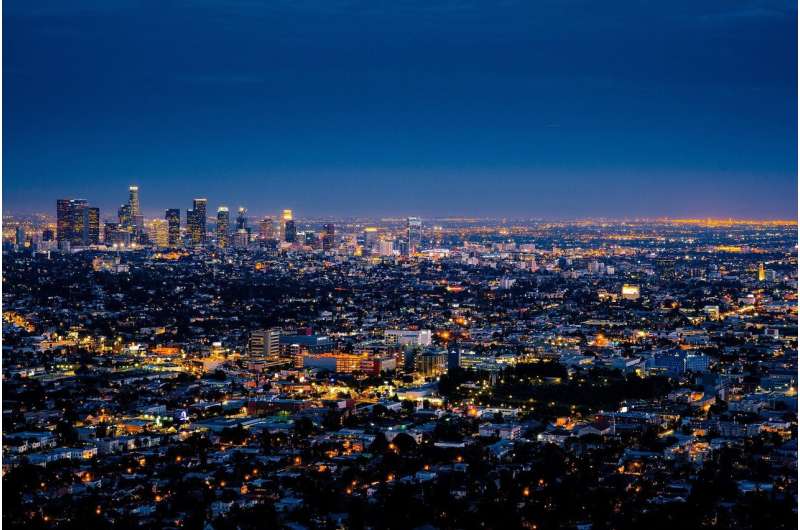Waymo is mapping L.A. in hopes of someday introducing driverless taxis

Waymo this week set three Chrysler Pacifica minivans crawling Los Angeles streets to make maps—but not the kind made for humans.
Google's autonomous vehicle offshoot deployed the vans not to chart the layout of the city's streets and avenues, but instead to craft 3-D maps of the infrastructure around which cars travel—curbs, fire hydrants, potholes, fences and crosswalks.
The goal is to turn the physical environment into a virtual reality that robot cars can understand.
Self-driving vehicles are equipped with sensors that help them quickly identify traffic and pedestrians, but these maps can help provide a fuller picture to inform those split-second decisions.
"We're not looking for things like the name of a road," like a human would, said Waymo spokeswoman Alexis Georgeson.
Waymo is a leader in the emerging self-driving car industry; it's already running a driverless taxi pilot program in and around Phoenix. It's mapping cities and testing for local weather across the U.S. and around the world ahead of an eventual widespread rollout of a robot car taxi service, similar to Uber or Lyft, but with no human at the wheel.
"We're in an early phase," Georgeson said. "We're going to these different cities to learn. Driving in Los Angeles gives us the opportunity to learn in a new environment and understand different traffic patterns to advance our technology."
Los Angeles is a bit late to Waymo's game. Waymo began mapping San Francisco years ago, for instance. But in a prepared statement, Waymo said "Los Angeles has some of the most complex transportation challenges in the country" and city transportation leaders have begun to take "bold, optimistic and creative" approaches to addressing them. Waymo will explore "how our tech might fit into the city's dynamic transportation environment."
No one's sure when a commercial driverless taxi system will be launched, but it won't be soon. Robotaxis come under the purview of the California Public Utilities Commission, which has yet to set the rules that robotaxi services must follow.
Waymo is experimenting with driverless taxis on public roads in Silicon Valley, shuttling employees to and from Google's many office parks. But those cars have a human operator inside.
The mapping vans in Los Angeles are driven by humans. There are currently three, mapping downtown and the Miracle Mile area. The company expects to expand the number of vans and areas to be mapped.
Besides mapping, Google is also using different cities and regions to teach self-driving cars about different weather and road conditions—San Francisco for tight traffic and hills; Michigan snow; Florida for one kind of rain, Washington state for another.
Different companies are taking different approaches to driverless deployment. Uber was testing driverless cars in Arizona with a human observer until one fatally struck a pedestrian, causing Uber to reevaluate its approach. Tesla has marketed its driverless technology as a defining product feature, including an upgrade that allows drivers to beckon their cars to them from a parking spot.
©2019 Los Angeles Times
Distributed by Tribune Content Agency, LLC.

















